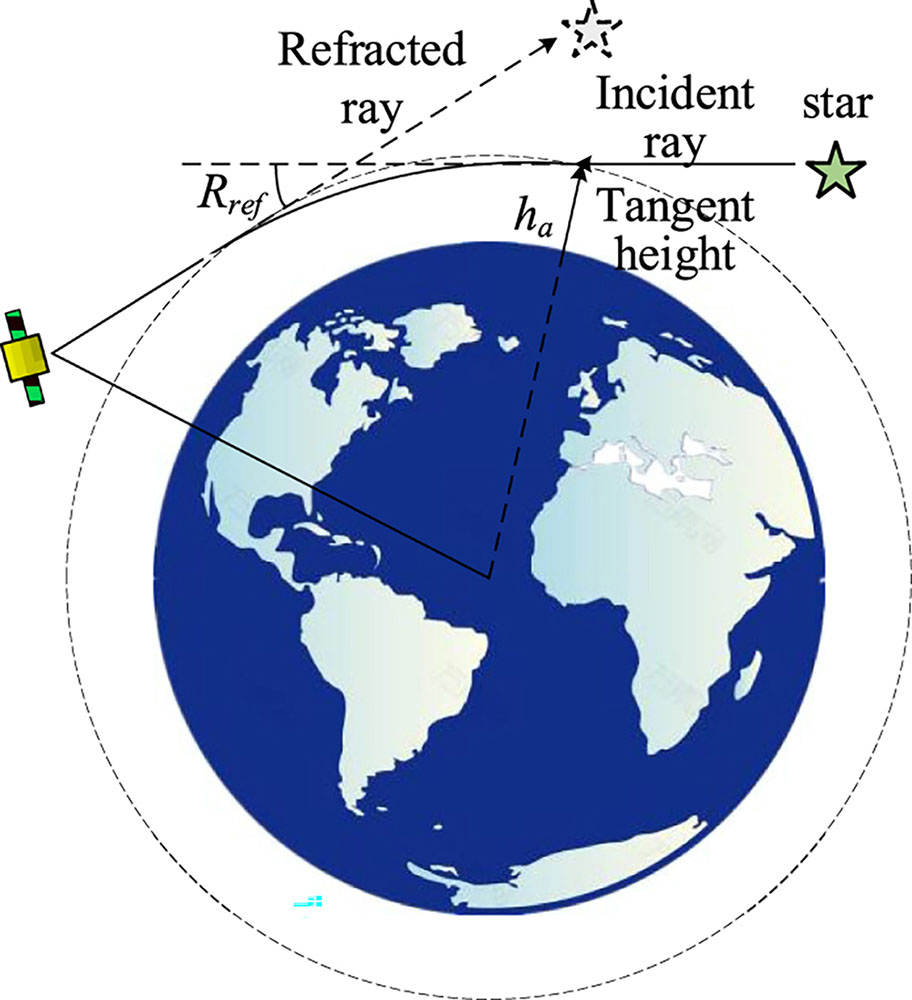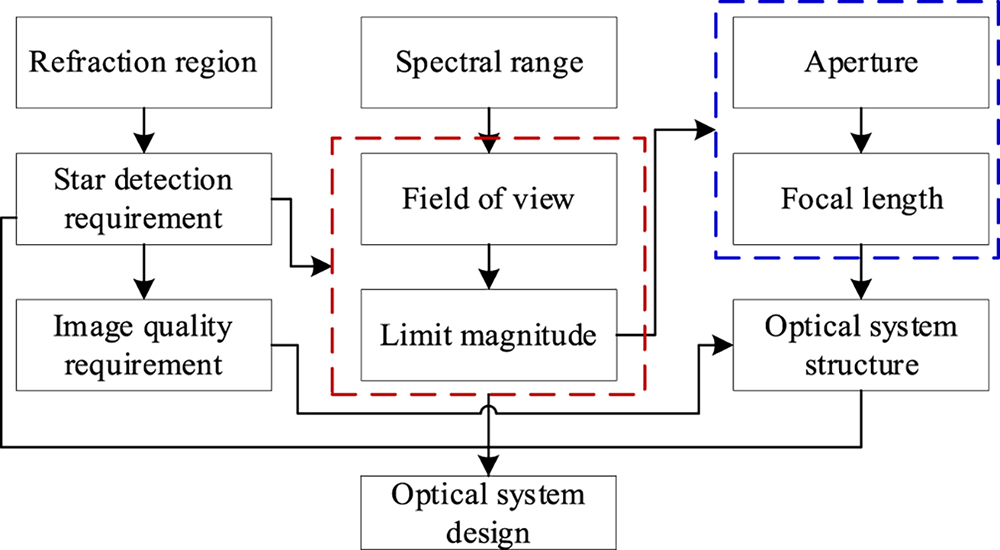Shaochong Wu, Hongyuan Wang, Zhiqiang Yan. Optical system design method of the all-day starlight refraction navigation system[J]. Journal of the European Optical Society-Rapid Publications, 2023, 19(2): 2023041
Search by keywords or author
Journals >Journal of the European Optical Society-Rapid Publications >Volume 19 >Issue 2 >Page 2023041 > Article
- Journal of the European Optical Society-Rapid Publications
- Vol. 19, Issue 2, 2023041 (2023)

Fig. 1. The principle of starlight refraction for navigation.

Fig. 2. Diagram of the main parameter design method.
Fig. 3. FOV distribution of the star sensor. (a) Geometry model of starlight refraction; (b) layout of FOV distribution.
Fig. 4. Limb background radiance at different tangent heights at 1.65 μm.
Fig. 5. Star detection probability at different limit magnitude with 6° FOV.
Fig. 6. The aperture and focal length with different FOV meeting the star detection requirements.
Fig. 7. Basic structure of two-mirror optical system.
Fig. 8. Schematic of the optical system.
Fig. 9. Spot diagram of diffuse spots.
Fig. 10. Energy concentration curve of the designed optical system.
Fig. 11. Lateral chromatic aberration curves of the designed optical system.
Fig. 12. Relative distortion curves of the designed optical system.
Fig. 13. Baffle and the designed optical system.
Fig. 14. Variation curve of the PST with off-axis angle.
| ||||||||||||||||||||||||||||||||||||||||||||||||||||||||||||||
Table 0. The aperture and focal length with different FOV meeting the star detection requirements (mm).
|
Table 0. Tolerances of designed optical system.
|
Table 0. Spot diagram radius with different field.
|
Table 0. Deviation of nominal criteria by tolerances.
|
Table 0. Optimized parameters of the catadioptric optical system.
|
Table 0. The limit magnitude with different FOV meeting the star detection probability.
|
Table 0. Main parameters of the detector.
|
Table 0. Initial parameters of the optical system.

Set citation alerts for the article
Please enter your email address



